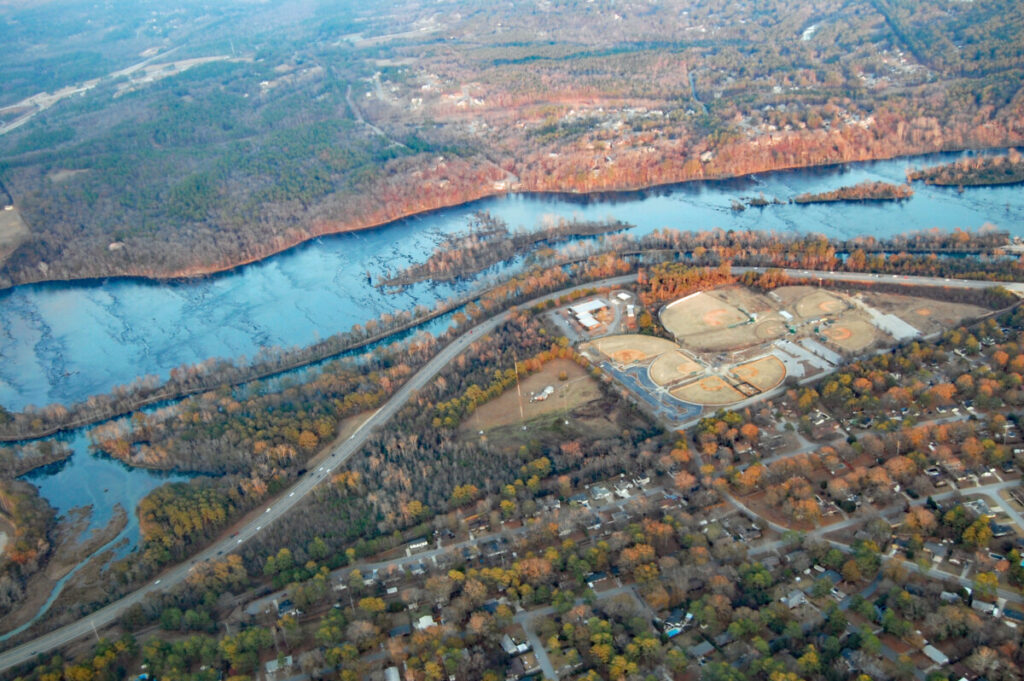The Augusta Canal is a roughly 13-mile canal, with the first level starting at the Headgates at Savannah Rapids Park, and the second and third level flowing through downtown Augusta, eventually flowing into the Savannah River and Beaver Dam Creek. Due to its location between the Piedmont plateau and the Fall Line, the Canal uses the natural drop in elevation, rather than manmade drops.
The Augusta Canal was built in 1845 for the purpose of providing power, water, and transportation. Throughout history, many different mills and factories lined the canal, which aided in an industrial boom in Augusta. Today, it is the only industrial canal in the South that is being continuously used, mainly in the form of hydroelectricity plants generating electric power, and is still a major source of Augusta’s drinking water. The Canal has also become a historical and recreational area, as many of the buildings from the 19th century are still along its banks, the Canal’s first level is accessible to kayaks and paddleboats, and boat tours are available to the general public.

Around the 20th century, the Canal and Augusta were struggling with periodic flooding. To mitigate the impact that the Canal was having on the flooding, the Canal’s banks were raised, a spillway was built, and the Canal was straightened. Though the Augusta Canal is manmade, spots along the bank have begun to return to their natural state. Additionally, with its placement near the Fall Line, a wetland has formed between the Canal and the Savannah River rapids that has become a wildlife refuge. However, in the second and third levels, there tends to be debris that gets trapped in the manmade obstructions and fewer spots where the bank has begun to return to its natural state.
Sources:
Augusta Canal National Heritage Area. (n.d.). The Augusta Canal – Rich in History. https://augustacanal.com/about-history.php
Augusta Canal National Heritage Area. (n.d.). The Canal – History, Geography, Environment. https://augustacanal.com/about-overview.php
Georgia River Network. (n.d.). Water Trails & Paddling – The Augusta Canal. https://garivers.org/water-trails-and-paddling/augusta-canal/
National Park Service. (n.d.). Augusta Canal National Heritage Area. https://www.nps.gov/places/augusta-canal-national-heritage-area.htm
